
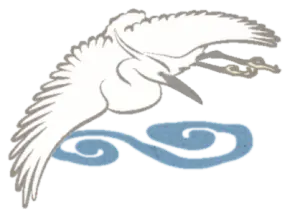


-
Dōgo Onsen Honkan+
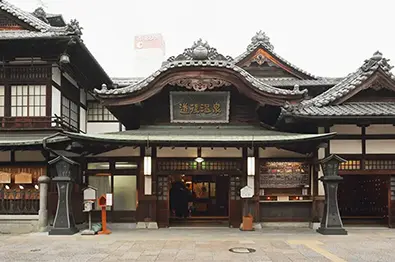
-
Asuka-no-Yu+
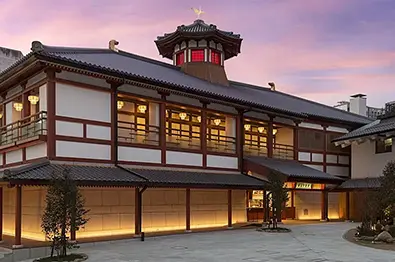
-
Tsubaki-no-Yu+

Dogo Onsen’s History, Spring Quality, and Charm
Dogo Onsen Front Page > Dogo Onsen’s History, Spring Quality, and Charm
History of Dogo Onsen,
Japan’s oldest hot spring

Ancient times: Legend of the Egret
“Legend has it that an egret with an injured leg often came here to soak its leg in the hot spring waters that had been gushing from the rocks since ancient times. Eventually its injury healed, and that is how this place came to be called ‘Sagidani’ (egret valley).”
Yoyogungo Rigen-shū, a compilation of local lore completed in 1710, includes the story of an egret with an injured leg that discovered a hot spring gushing from the rocks. The egret returned to the hot spring every day to soak its injured leg. After a while the leg completely healed, and the egret flew away as strong as ever. The people who saw this thought it very strange, and when they too began bathing in the water, they found that it relieved fatigue and speeded recovery from illness. From that time on, bathing in the hot spring became a widely popular practice.
The legend tells how Dogo Onsen was discovered by the egret and how people adopted the custom of bathing in the onsen after seeing the egret’s miraculous recovery. In later years, to commemorate that legend, a stone was placed here called “Sagi Ishi” (egret stone), which is now preserved at Hojo-en square in front of Dogo Onsen Station.
Age of the Gods: Legend of Tama-no-ishi
In the surviving manuscripts of Iyo no Kuni Fudoki is recorded the legend that when the two divinities okuninushi-no-Mikoto and Sukunahikona-no-Mikoto visited Iyo, Sukunahikona-no-Mikoto became very ill. When okuninushi-no-Mikoto carried the small divinity on the palm of his hand and soaked him in the water of Dogo Onsen, Sukunahikona-no-Mikoto immediately recovered, and to prove that he was healthy again he danced upon a stone. That stone came to be called Tama-no-ishi, and today it is enshrined at the north side of Dogo Onsen Honkan.
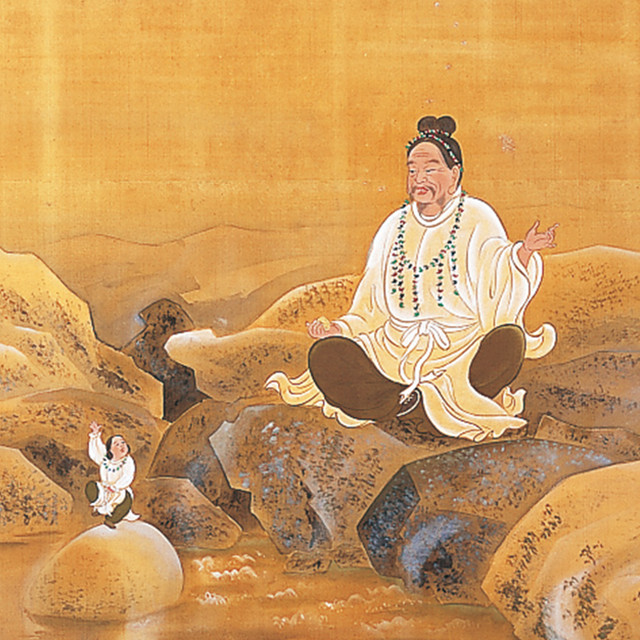
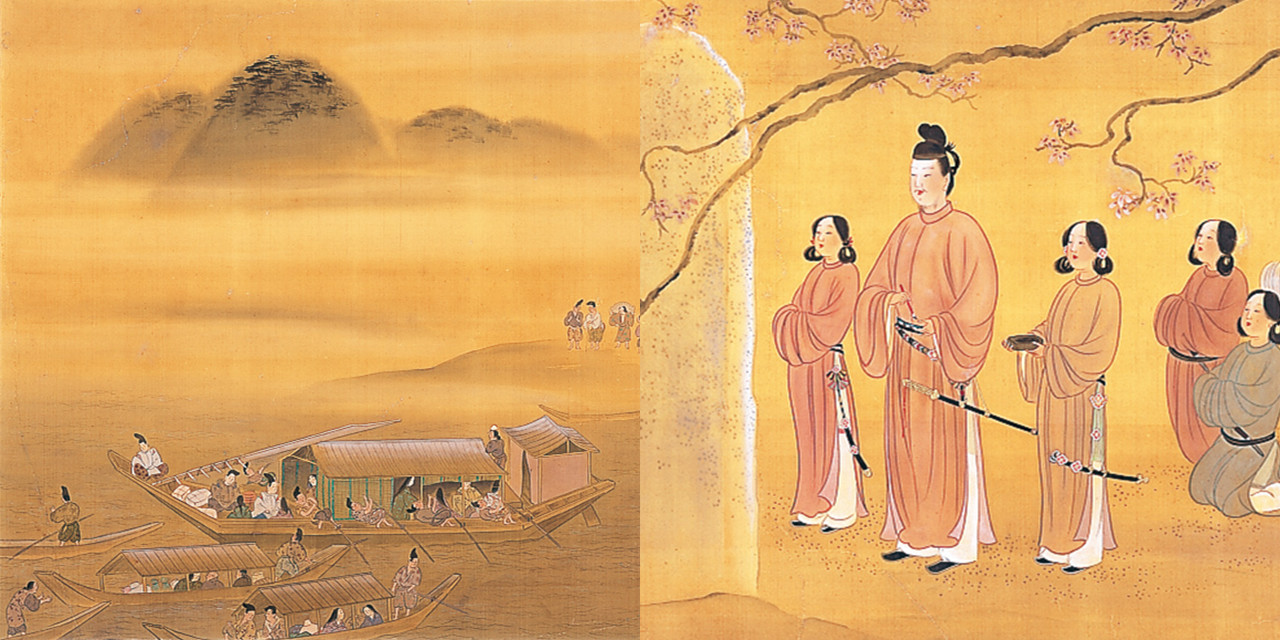
Asuka period: Legend of Prince Shotoku’s visit and poem about Nikitatsu
It is said that when Prince Shotoku visited Dogo Onsen together with the priest Hyeja and Katsuragi-no-Omi in 596, he was so impressed by the beautiful scenery and the quality of the hot spring that he had a monument erected at Yu-no-Oka to commemorate his visit. During his visit the camellia were in full bloom, and Prince Shotoku compared the scene of the healing hot spring benefiting all people equally as being like a Buddhist paradise.
“At Nikitatsu we waited for the moon before boarding our boat. Now the tide is in at last. Come, let’s get to rowing.”
It is said that Nukata-no-okimi composed this poem when the ship carrying Empress Saimei set sail from Nikitatsu port. In addition to Empress Saimei, there are also records of visits to Dogo Onsen by many other members of the imperial family, including Emperor Jomei and Prince Naka-no-oe.
Heian period: “The bathtubs of Iyo”
Among the popular songs of the Heian Period known as zogei saibara, the folksongs sung in the area around Dogo Onsen include references to “the bathtubs of Iyo.” There is also reference to “the bathtubs of Iyo” in the famous Tale of Genji, and in the capital, Kyoto, the expression “the bathtubs of Iyo” came to be used to mean a large number of something.


Kamakura period: Ippen Shonin and the yugama
Ippen Shonin, born in Hogon-ji Temple in Dogo, was the Buddhist monk who founded the Jishū sect. It is said that in 1288 he wrote “Namu Amida Butsu,” the name of Amida Buddha in 6 characters, on the cap of a yugama cauldron at the request of Kono Michiari. That yugama still exists today and is enshrined in Dogo koen Park as Yugama Yakushi.
Edo period: Operation of Dogo Onsen by Matsudaira Sadayuki
Matsudaira Sadayuki became lord of the Matsuyama domain in 1635, and the following year he began expanding the facilities at Dogo Onsen. It is recorded that separate baths were established for samurai and priests, for women, and for male commoners, and that there were also a 15-sen* bath, a 10-sen bath, a therapeutic bath, and downstream a bath for horses.
*100 sen was equal to 1 yen

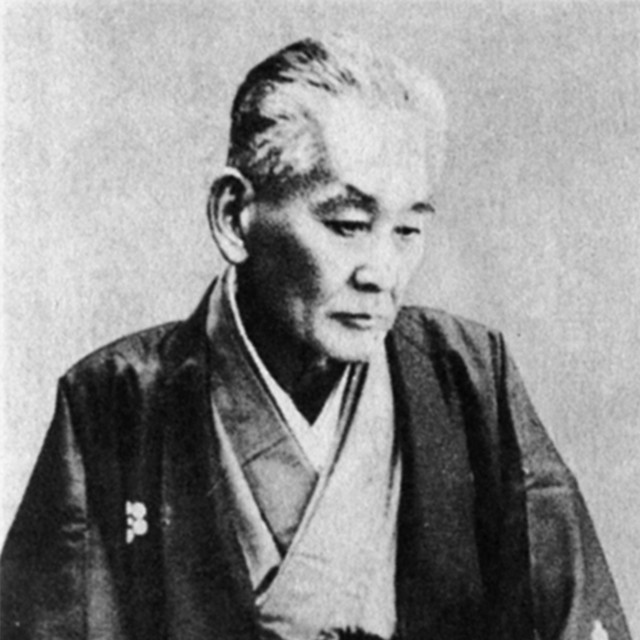
Meiji period: Renovation of Dogo Onsen Honkan by Isaniwa Yukiya
After Isaniwa Yukiya became the first mayor of Dogo Yunomachi in 1890, he began renovating Dogo Onsen Honkan, which had fallen into disrepair. There was considerable opposition to his plan, and a group opposing the renovation even barricaded themselves inside Hogon-ji Temple in protest. Isaniwa argued “Only if we build something that will continue to be unrivaled even 100 years from now will it be of any value,” and through his unwavering commitment to make Dogo prosperous, the major undertaking of renovating Dogo Onsen Honkan was completed in 1894.
Spring quality of Dogo Onsen: For beautiful skin
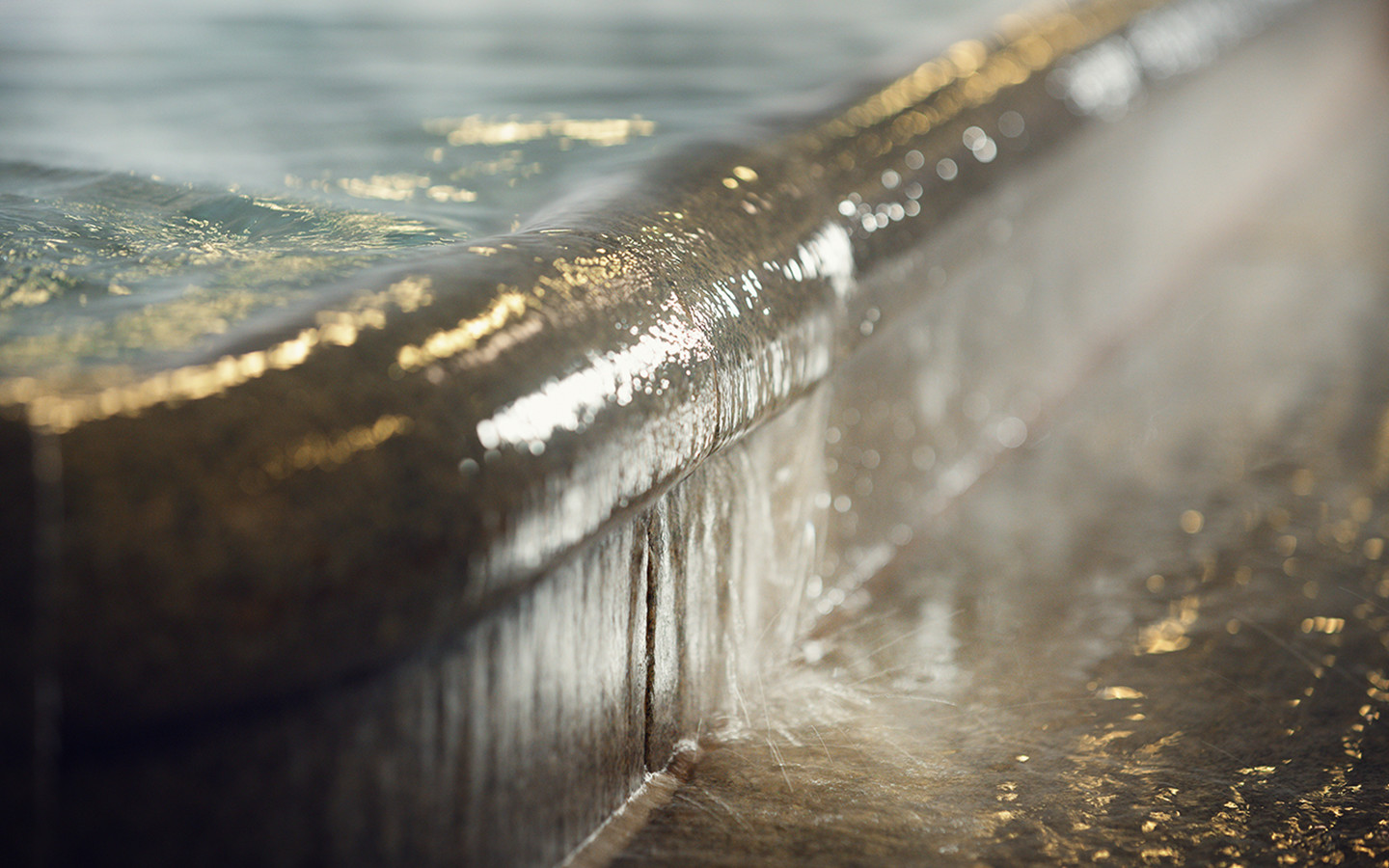
Alkaline hot spring water is very gentle on the skin, making it ideal for spa and beauty treatment.
The temperature of the hot spring water pumped up from 18 sources is 20–55℃, which is then adjusted to about 42℃ by blending the water from the sources. You can feel the effects of the spring water as it is not reheated, and no water has been added.
Dogo Onsen is one of Japan’s few onsen with hot spring water direct from the source with no reheating or added water.
Charm of Dogo Onsen: Shinrokaku & Sora-no-Sanpomichi
Shinrokaku and Tokidaiko
The Shinrokaku cupola atop the roof of the 3-tiered Dogo Onsen Honkan makes the Japanese style building more elegant. The surrounding shoji-type windows are fitted with giyaman glass and glow red at night, which is something special in the night sky of the onsen town. The Tokidaiko drum suspended from the ceiling is sounded on 3 occasions each day to mark the time of day. The drum is struck 6 times at 6:00 a.m., 12 times at noon, and 6 times at 6:00 p.m., adding a special onsen atmosphere. The sound of Tokidaiko has been designated one of the 100 Soundscapes of Japan.
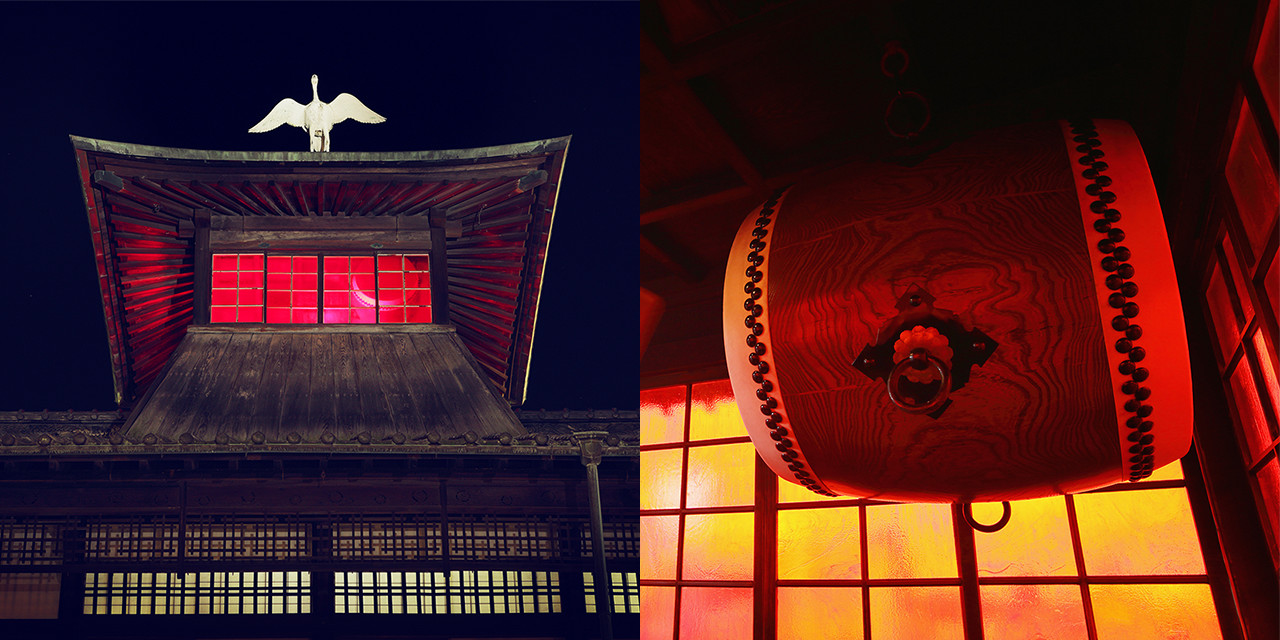

Sora-no-Sanpomichi(sky promenade & footbath)
Located on Mt.Kanmuriyama, the small mountain south of Dogo Onsen Honkan, Sora-no-Sanpomichi (sky promenade & footbath) offers panoramic views of Dogo Onsen Honkan and Dogo Yunomachi, both during the day and at night.








